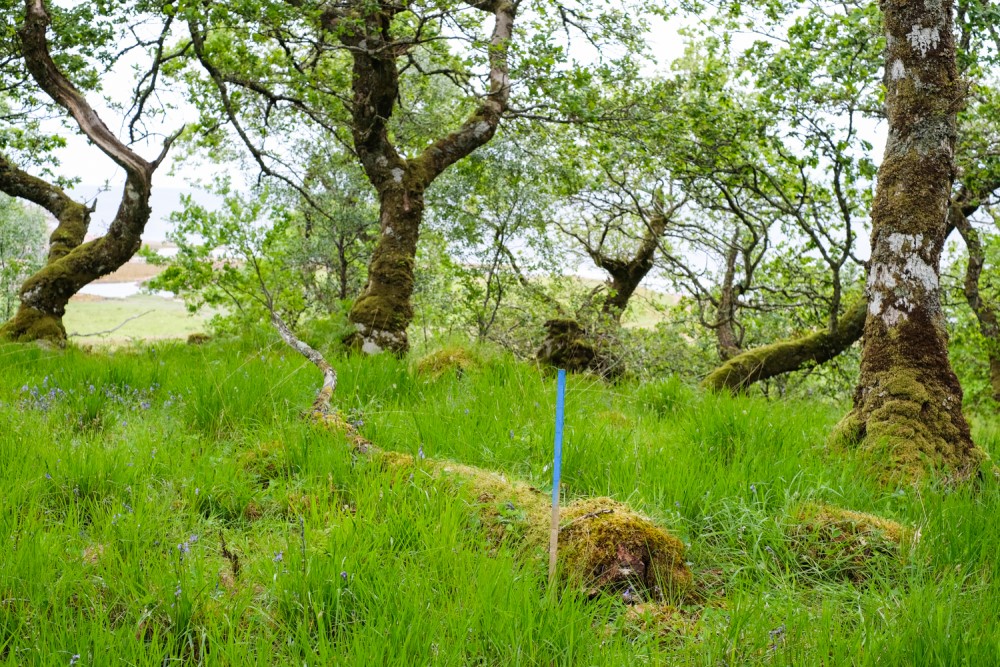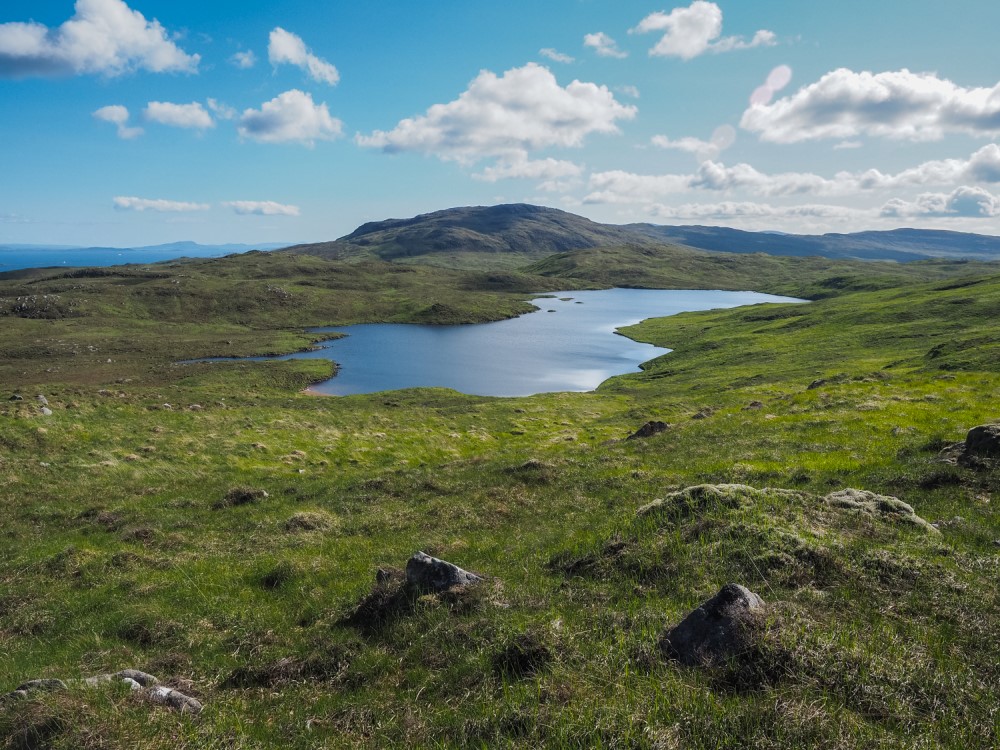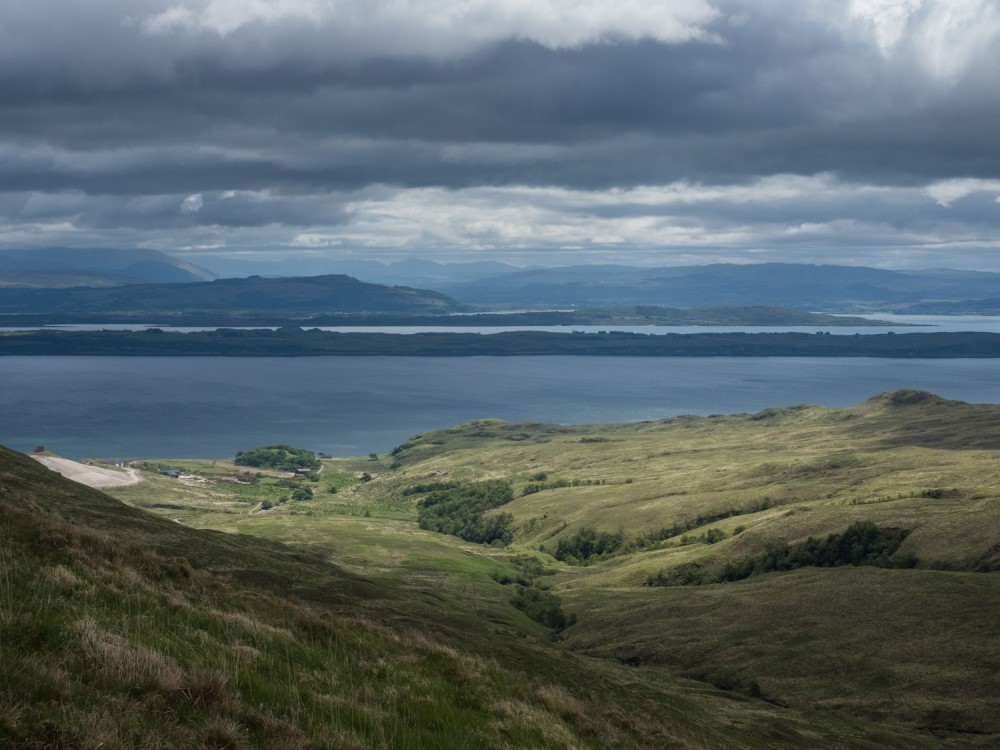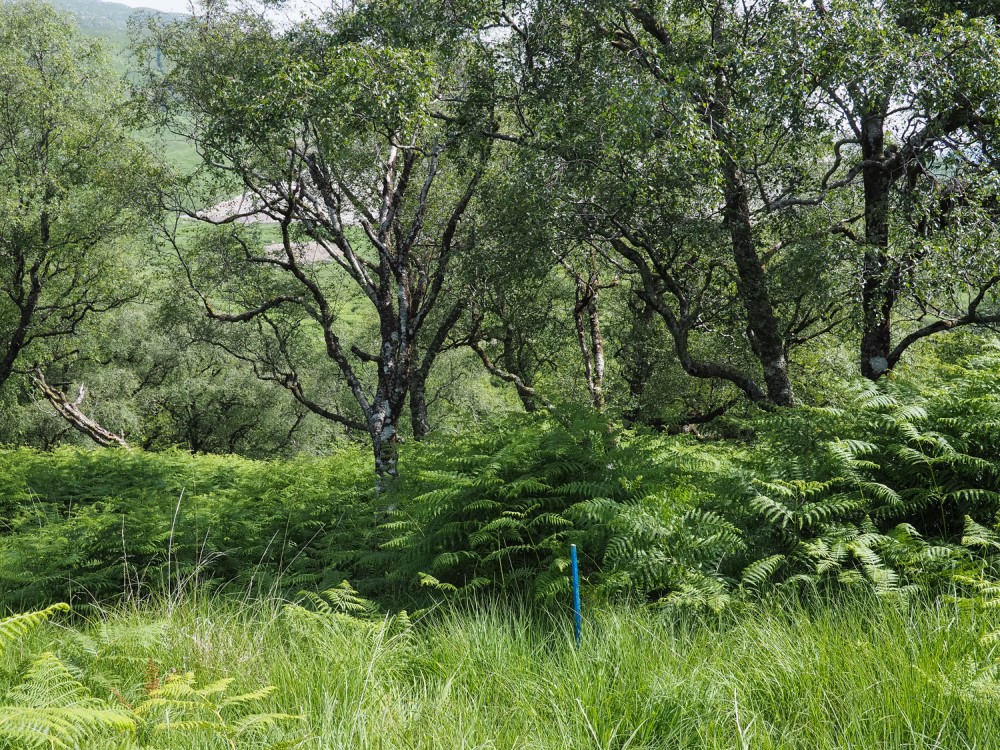Glensanda Woodland Creation: Biodiversity
31 October 2023
Woodland creation projects can offer land managers great benefits, from improving water management on site, carbon storage, production of timber and providing natural shelter for livestock and crops. Woodlands can also be critical to improving biodiversity if they are put in the right place for the site and the species which are already present in the area. Every woodland creation project is unique to its own site, climate, and owners’ objectives, and can range dramatically in scale from a small shelterbelt to a landscape-scale rewilding project. The case study below discusses a remote, innovative project on Glensanda Estate, which due to various factors has developed over several years to its current state.
The Site

Glensanda is a remote 2,629 hectare Highland Estate located on the Morvern Peninsula on the banks of Loch Linnhe.
Inaccessible by road or rail, the only practical access is by boat from the shores of Loch Linnhe, and this remoteness has played a key part in its history.
Originally a Viking settlement and latterly the main base for the Macleans of Kingairloch Clan, the small settlement at Glensanda was abandoned in 1812 when the entire population emigrated to Nova Scotia. What followed was two centuries of changing ownership but almost exclusive use as a sprawling deer estate. It was finally purchased by Foster Yeoman in 1982 to address a shortage of building aggregate, with the creation of Glensanda Quarry following in 1986. Glensanda Quarry, now owned by Aggregate Industries, is a pioneering granite quarry mining the Meall na h-Easaiche mountain, using innovative techniques to supply granite vital for construction, with transport & distribution completed entirely by sea along the waters of Loch Linnhe.
Whilst the quarry forms Glensanda’s key operation, it occupies only a small portion of this vast 2,629 hectare estate, with the remaining area being used exclusively for habitat restoration, biodiversity plans and ecological improvements of the landscape. The site’s owners have heavily invested in landscape-scale restoration, and under their stewardship there have been well-documented improvements in plant, mammal, bird and butterfly populations, with many endangered, UK BAP Priority, and high-conservation value species now calling Glensanda home. These include white-tailed sea eagles, black-throated divers, otters, and rare butterflies such as Chequered Skippers and the Pearl-Bordered Fritillary.
The biodiversity improvements made have included woodland creation, with a highly successful native broadleaved woodland planted by the estate around the mouth of Glensanda River in 2012 using a mixture of Birch, Oak, Hazel and Alder of local provenance. It is from the success of this initial woodland planting that a new larger proposal was scoped, planned and in development.
Why Woodland?
Glensanda is predominantly characterised as a high plateau landscape of exposed moorland of boggy acidic moor and shallow peaty soils. These are punctuated with rocky granite outcrops and laced with steep-sided fertile riparian glens and coastal cliffs that shelter remnants of ancient native woodlands. The hillsides are open, where at one time there would have been much more native woodland. To address the Climate and Biodiversity crises, the planting of native woodland, which will tackle both these issues and was historically the dominant vegetation here, seemed like a good choice. A small woodland plantation was put into the glen in 2012 to act as a demonstration woodland to show what could be achieved. Biodiversity was the main driver for the woodland so a mix of species was chosen for the planting to mimic what would have naturally been here, copying the species that were already present within the estate, which included ash, oak, holly, rowan, birch and aspen.
The newly proposed woodland creation at Glensanda extends some 86 hectares around the Glensanda River, encompassing 68 hectares of new native woodland creation of exceptional ecological value. To be planted with a mixture of eight native species of local provenance including downy birch, alder, sessile oak, holly and Scots pine, these new woodlands have been carefully designed and modelled to replicate and expand on the fragmented remnants of Scotland’s rain-dampened Atlantic Oakwoods that can be found within the riparian glens of Glensanda. This new planting will deliver a multitude of benefits, including:
The expansion of woodland habitat networks across this remote landscape.
The stabilisation of soils and slopes.
The restoration of lost native rainforests within this now predominantly barren peninsula.
The sequestration of atmospheric carbon for generations to come.

Due to the site’s variety in soil composition and ground cover the tree location has been planned to suit the area and try to ensure greatest survival rates. Atlantic oakwoods are being planted within the riparian areas around the lower banks of Glensanda River (where they would have naturally grown) with alder and willow concentrated on wetter ground, and flowering species such as rowan and hawthorn being preferred on the woodland edges to maximise benefit to bird and pollinator species. Working with the land and engaging expert consultants, the planting design has been tailored accordingly.
Project Issues
When planning a woodland project there are many considerations to take into account before the project can begin. At Glensanda, planting trees is not a straightforward issue due to the rough nature of the terrain and with only boat and helicopter access. In addition, the biodiversity on site needs to be maintained and protected. Specific to Glensanda, the presence of the white-tailed sea eagle and the red throated diver further compounded the difficulties, as both are Schedule 1 species, which breed on site and are protected from disturbance. This means that any operations must be conducted in a sensitive and cautious way to avoid disturbance of these highly protected species. This resulted in the plans for the woodland being seriously revised more than once. The quarry also supports a highly important population of lepidoptera, and the estate lies within one of Butterfly Conservation Scotland’s Butterfly Survival Zones as it now supports five key UKBAP lepidoptera species.
With a number of constraints and sensitivities, further compounded by rising costs of materials and the impact of the global Coronavirus pandemic, the development stage for this concept took considerable time. Additionally, organising the logistics of everything needing to be brought to site by boat, and ensuring contractors understood the challenging terrain and logistical difficulties of the site was vitally important. When planning a woodland creation, it is essential to start the process early and to allow for plenty of flexibility to address any sensitivities or constraints identified during preliminary scoping. Effective community engagement and consultation with relevant stakeholders such as the Local Council Authority, NatureScot, RSPB, Scottish Forestry, and Historic Environment Scotland is similarly vital in the design and delivery of a successful project and can be time-consuming.
The project has had to be adaptable and ensure that all considerations have been addressed to ensure that the woodland planned for the site will offer the best chance of success and provide the most suitable habitat for species to the area.
Benefits to the Quarry and Looking to the Future

The company are already seeing benefits following the original 2012 planting. Woodland birds are increasing with birdsong echoing round the glen where before it was the bellowing of the stags in the distance. The landscape at the mouth of the glen is changing from barren moor to a rich wooded glen landscape. It is expected that this benefit increases changing the whole atmosphere of the glen when the young trees, that are to be planted this winter, establish.
One of the challenges is to be able to get base line comparative data for the changes. While there is a good record of the mammals, plants and birds using the site at present, to be able to show comparable quantitative data for future changes is difficult. Plans are currently being made to use technology to get a better idea of the base line and then as the woodland grows to be able to show the biodiversity improvements to the area. This will be able to demonstrate the gradual changes of biodiversity within the area as the woodland develops. Showcasing the variety of species that are utilising the woodland as it matures.
The Glensanda Quarry woodland creation project showcases that with determination, vision and careful design, woodland projects can be created to enhance biodiversity, even in the most remote and challenging areas. Bringing trees back to this estate will enhance and protect biodiversity, connecting fragmented woodland remnants to form species-rich habitat networks and returning long-lost woodland to this sensitive landscape.
Related FAS Resources
Sign up to the FAS newsletter
Receive updates on news, events and publications from Scotland’s Farm Advisory Service
